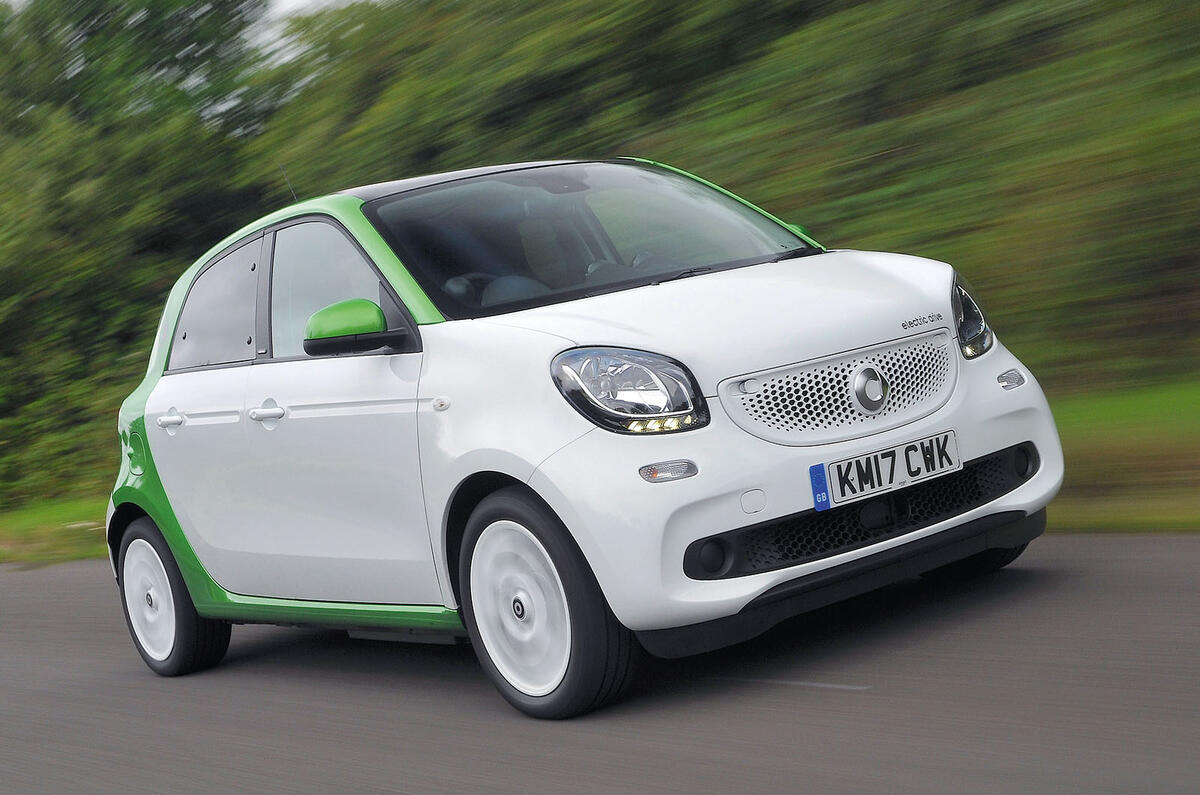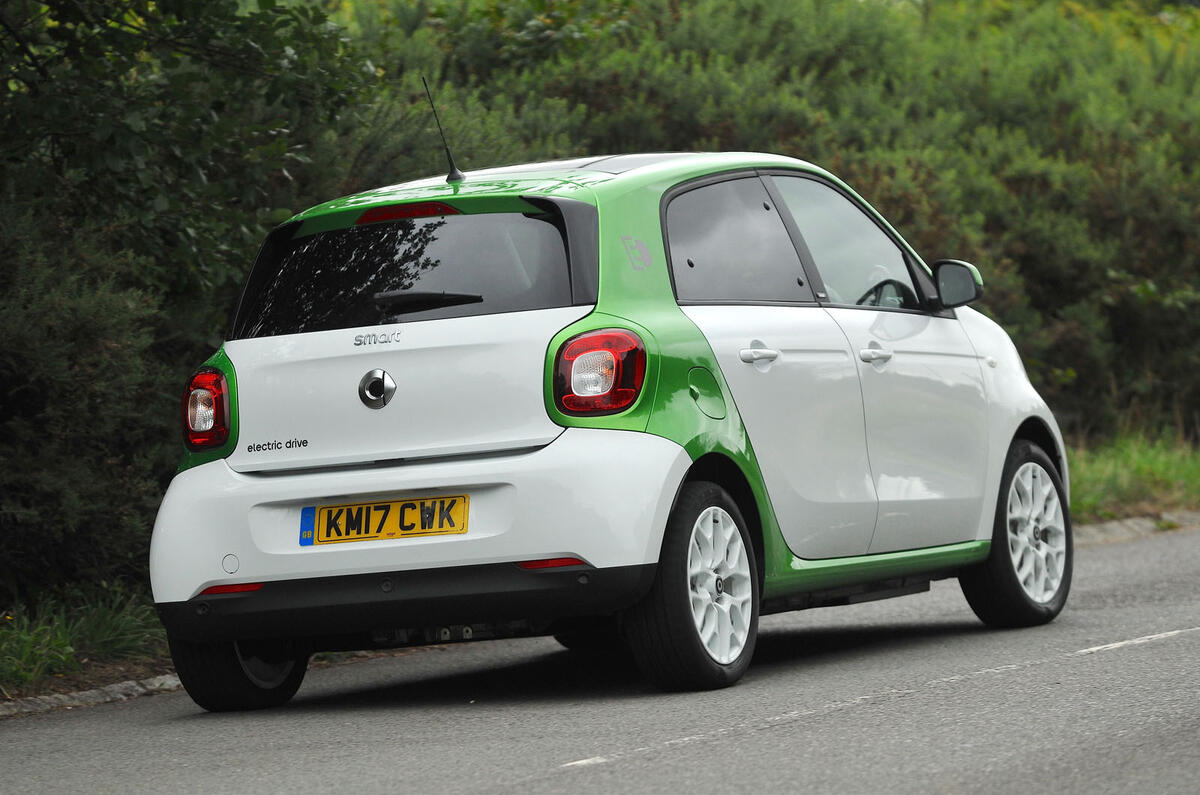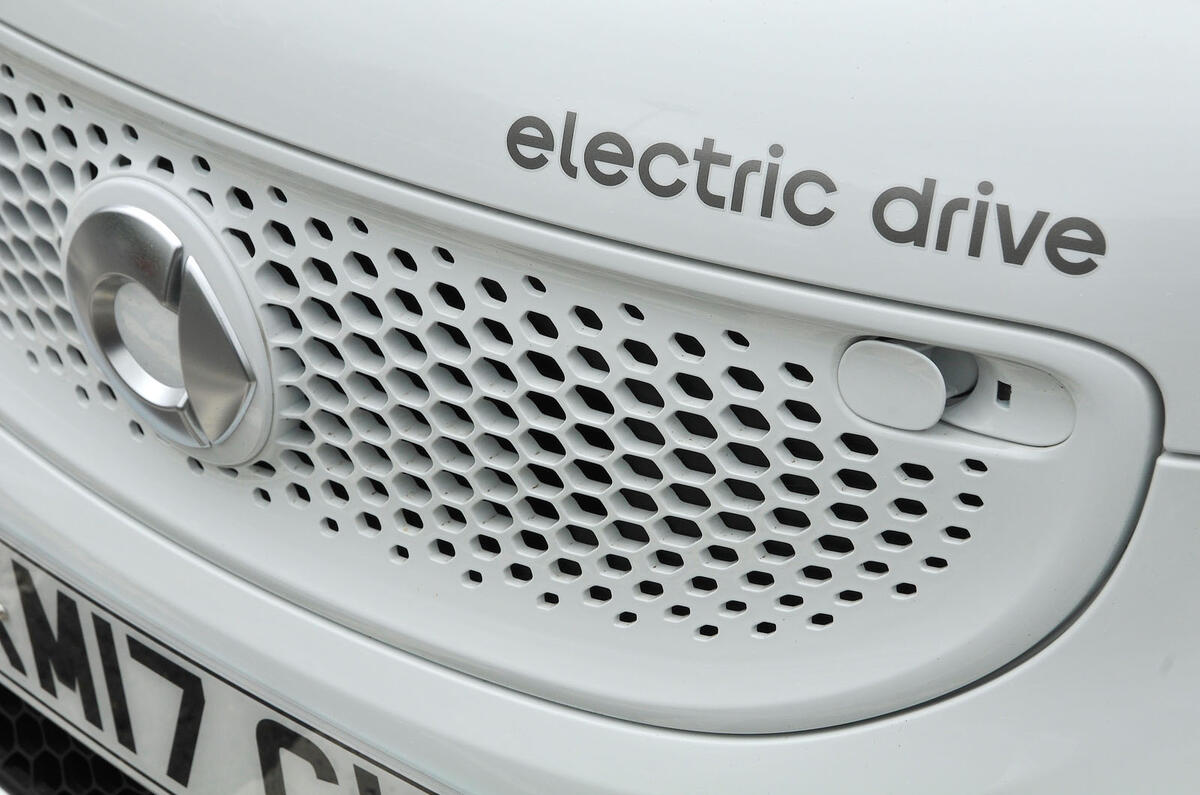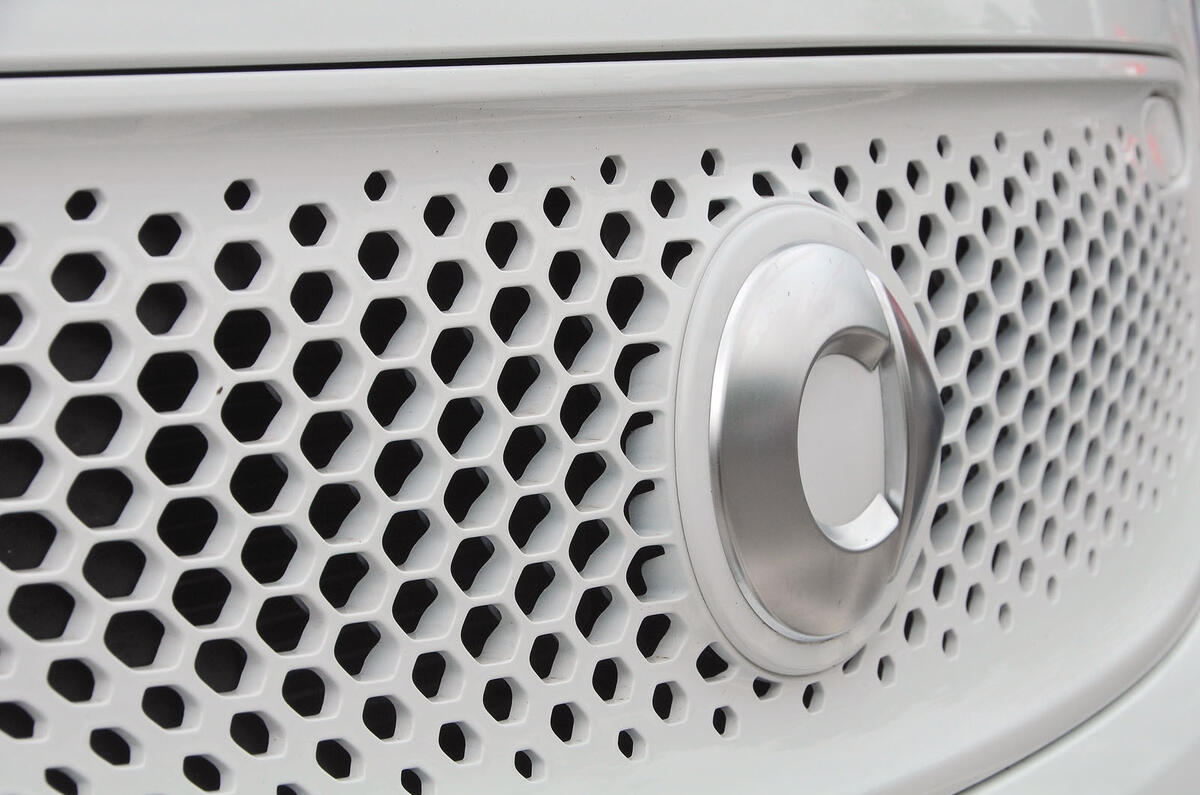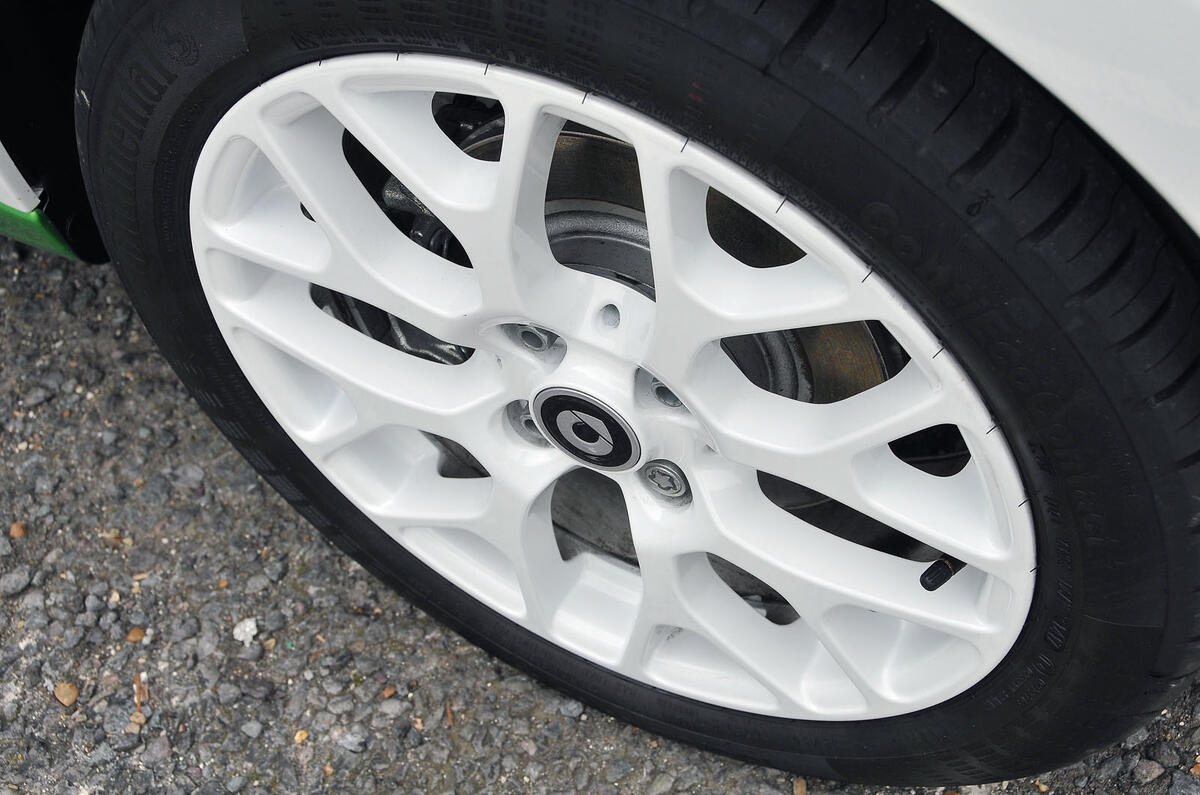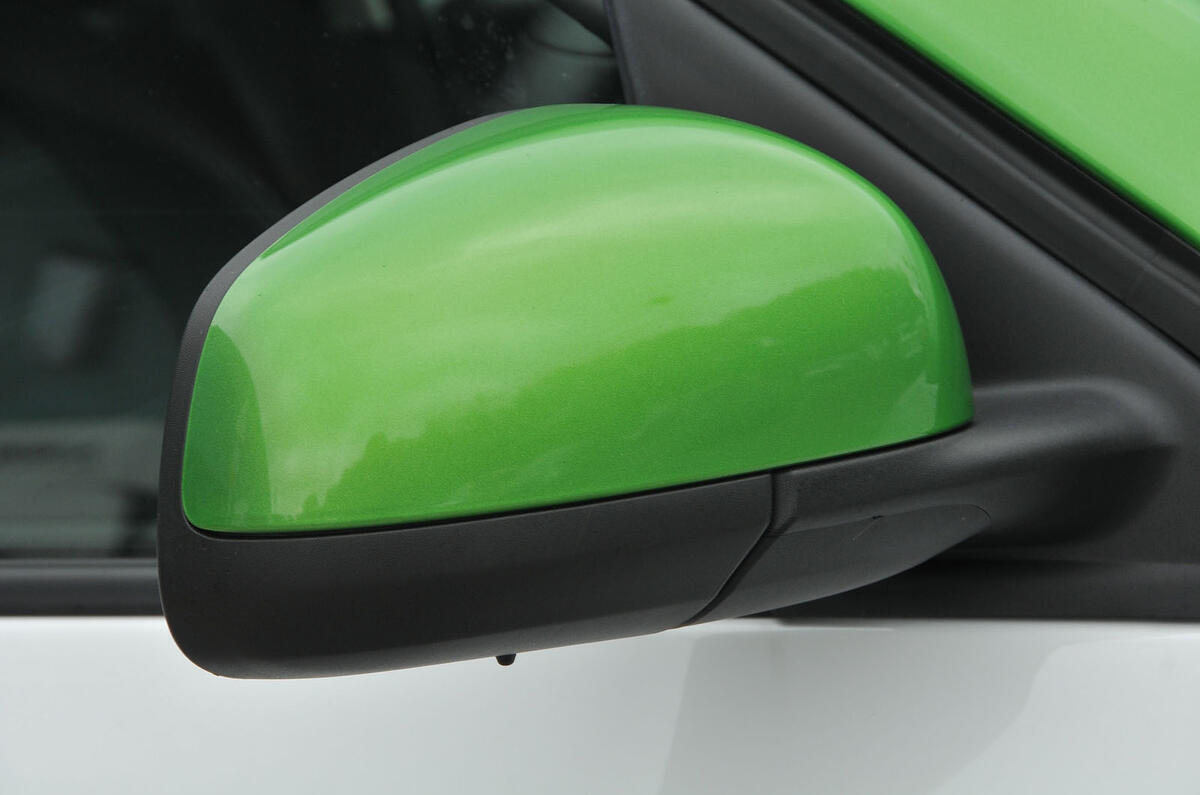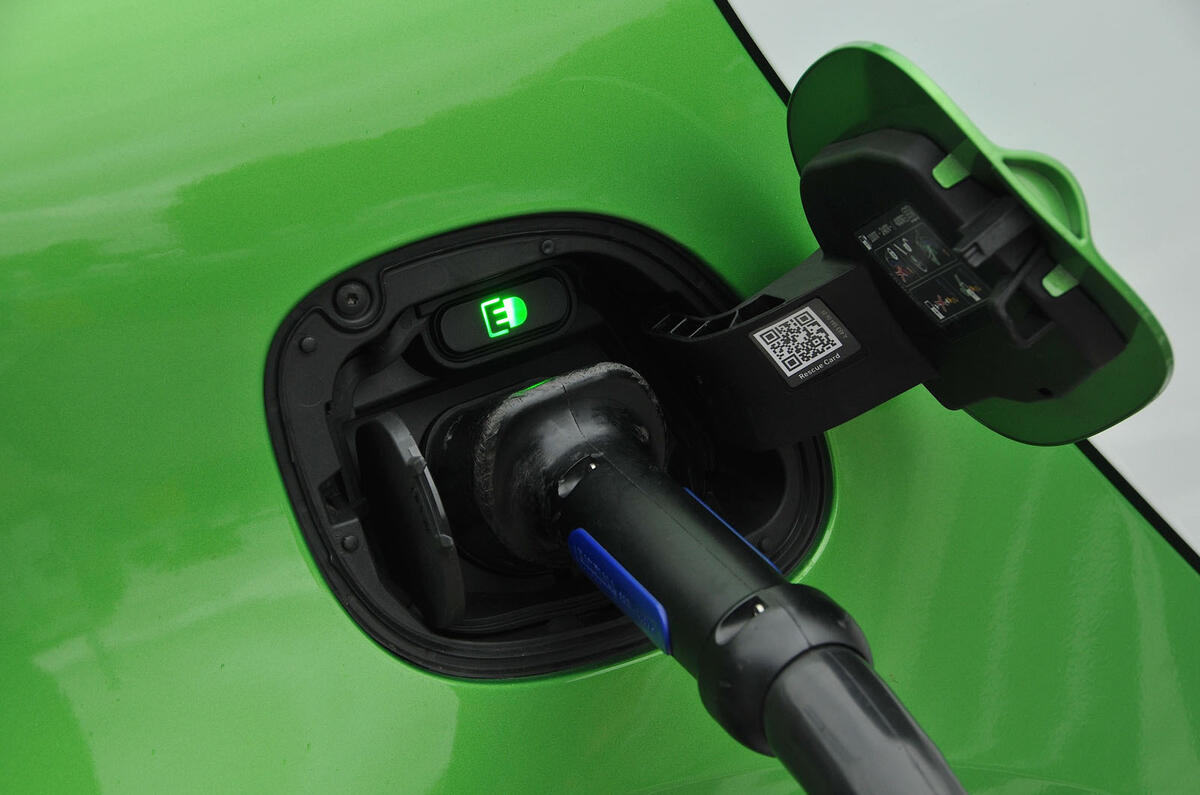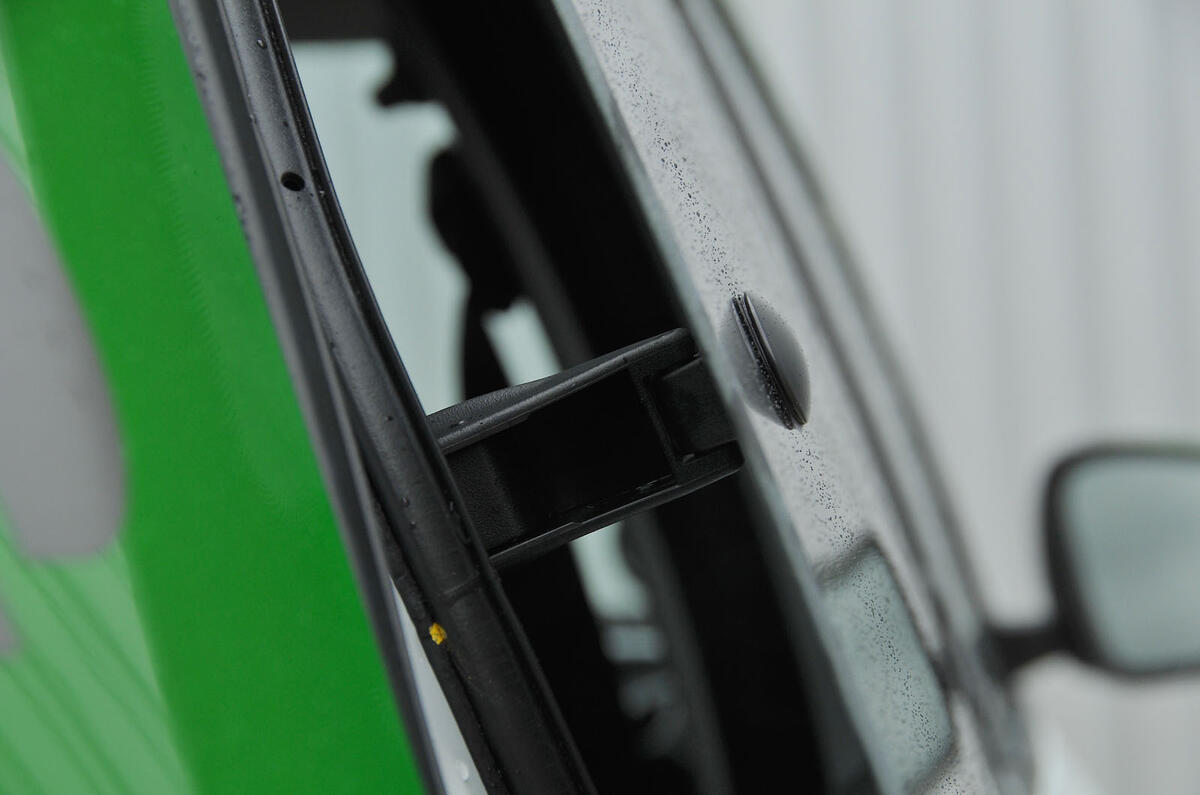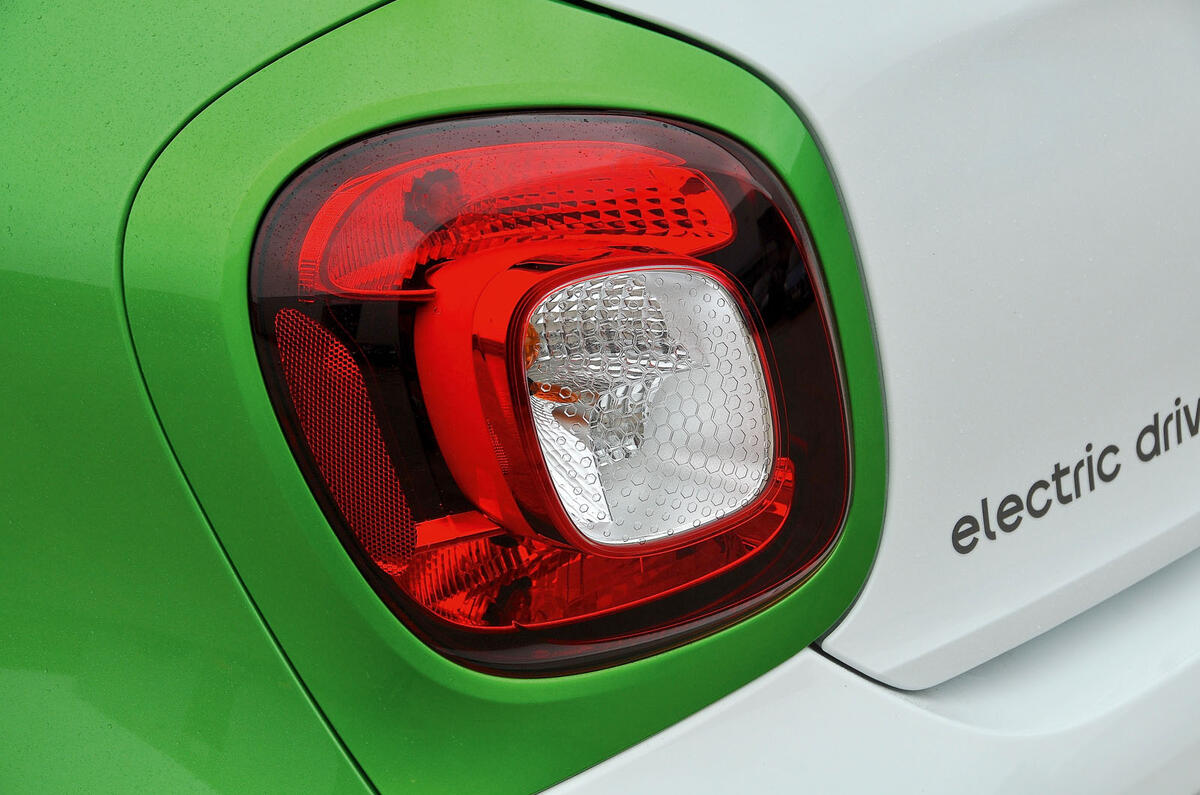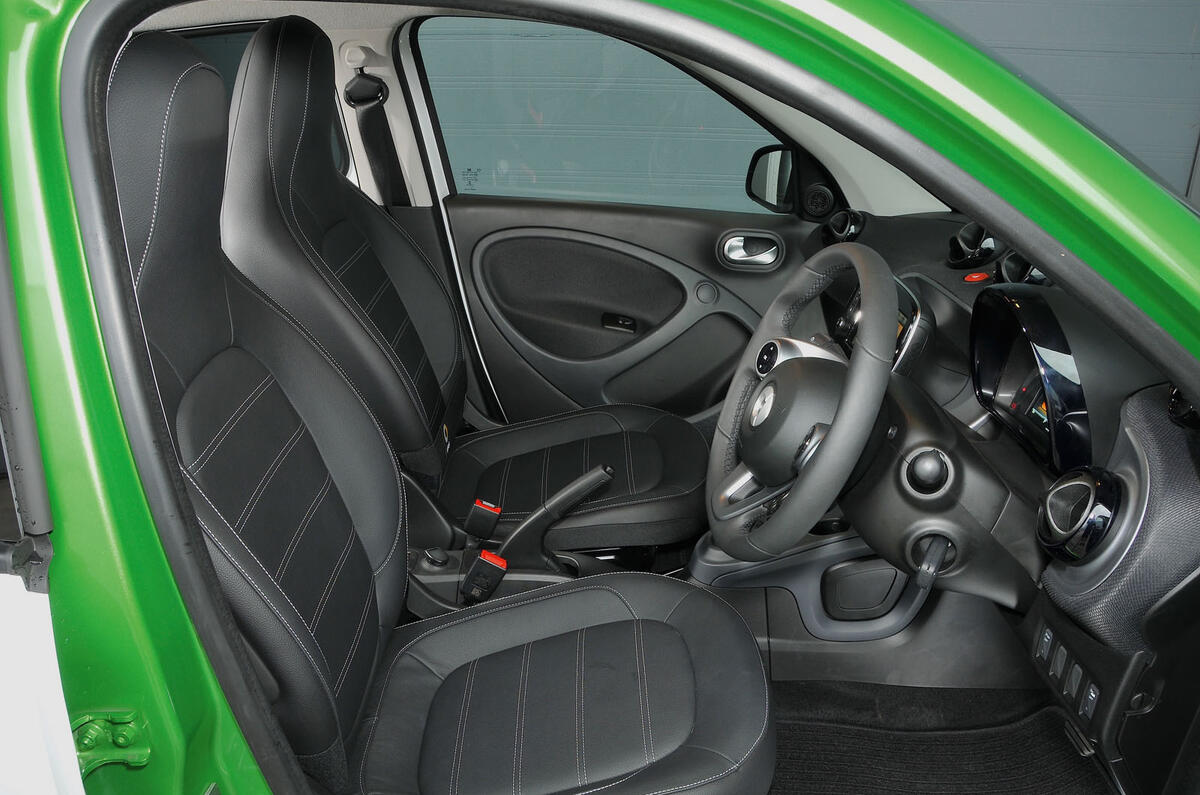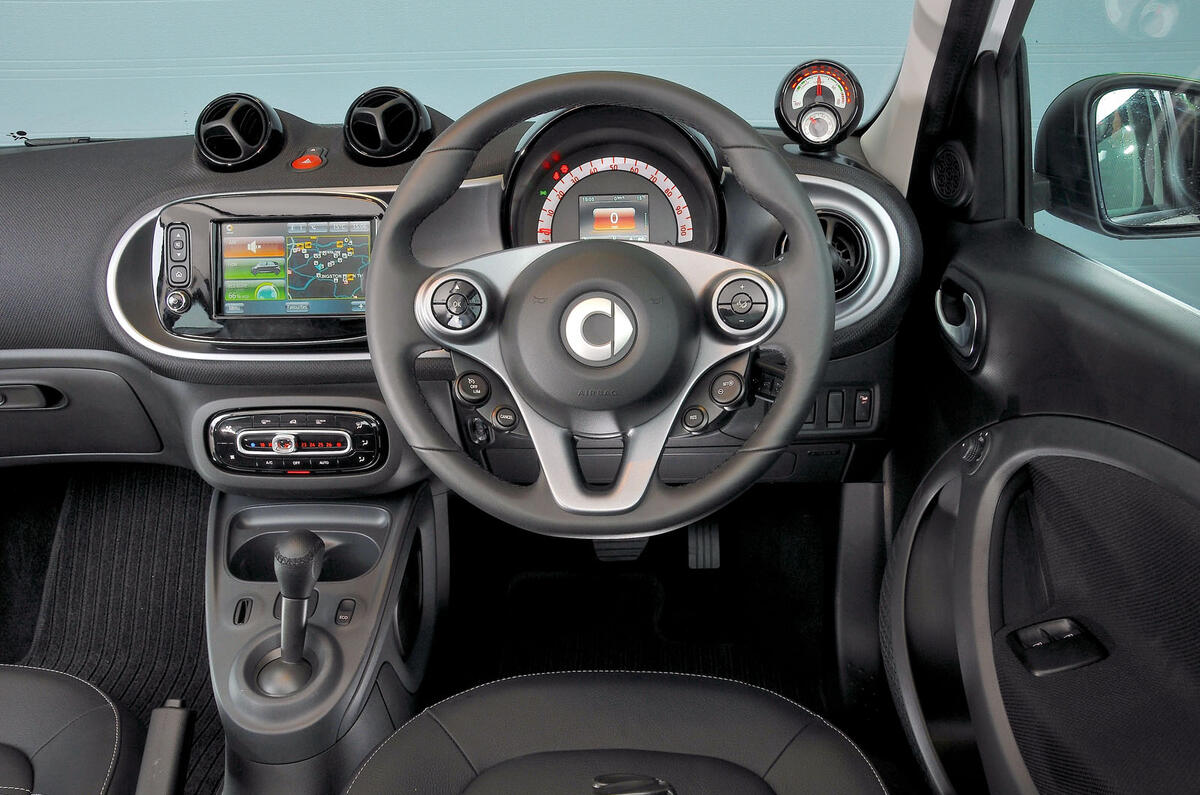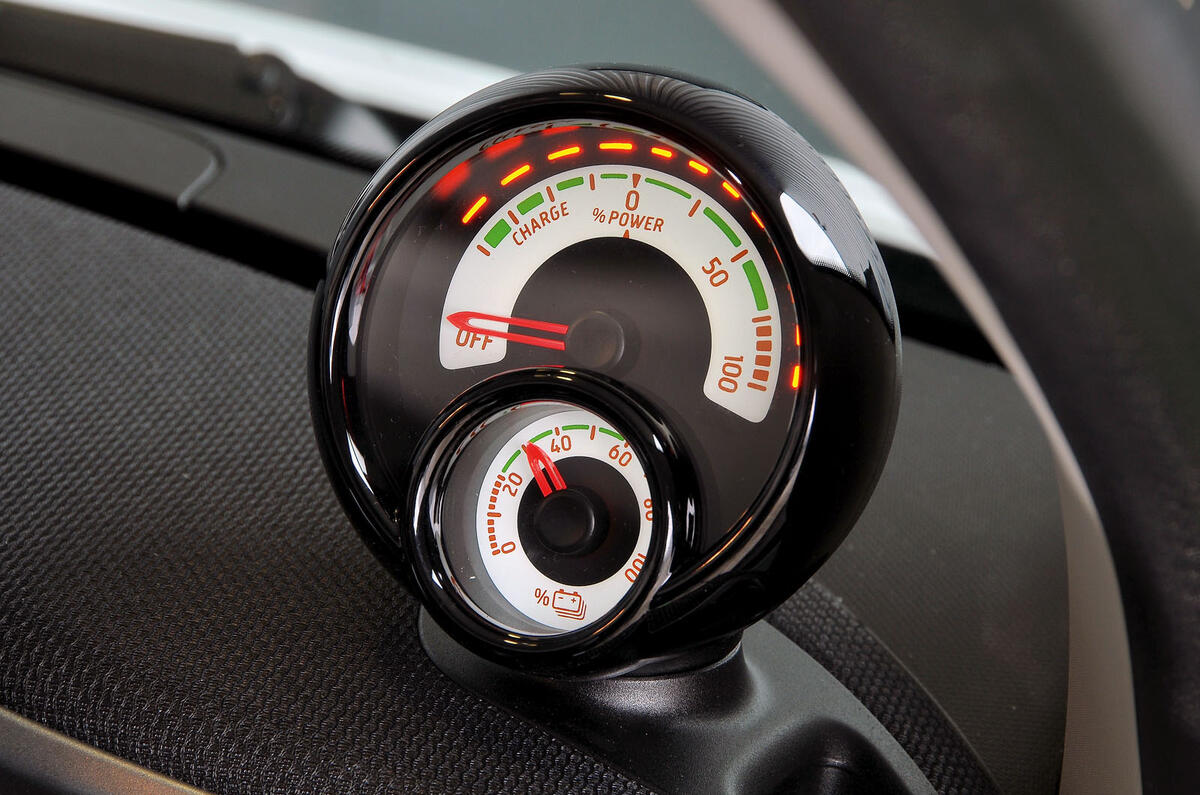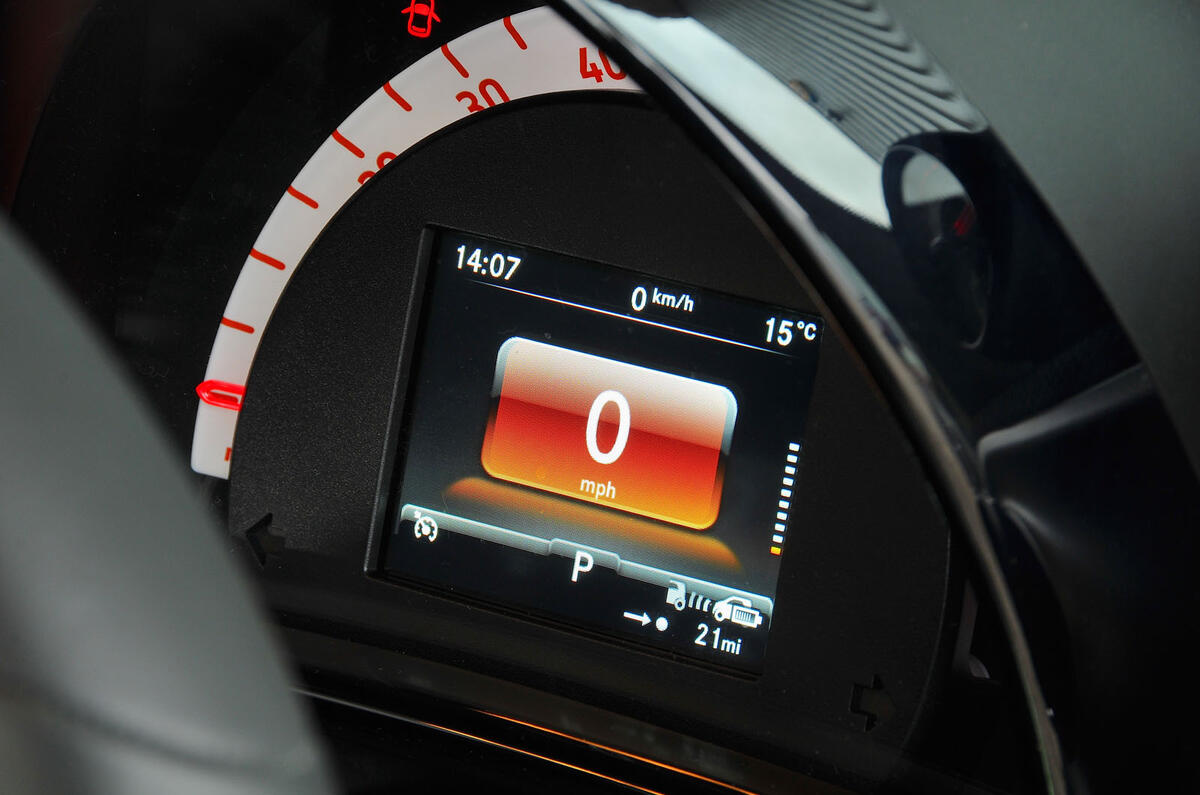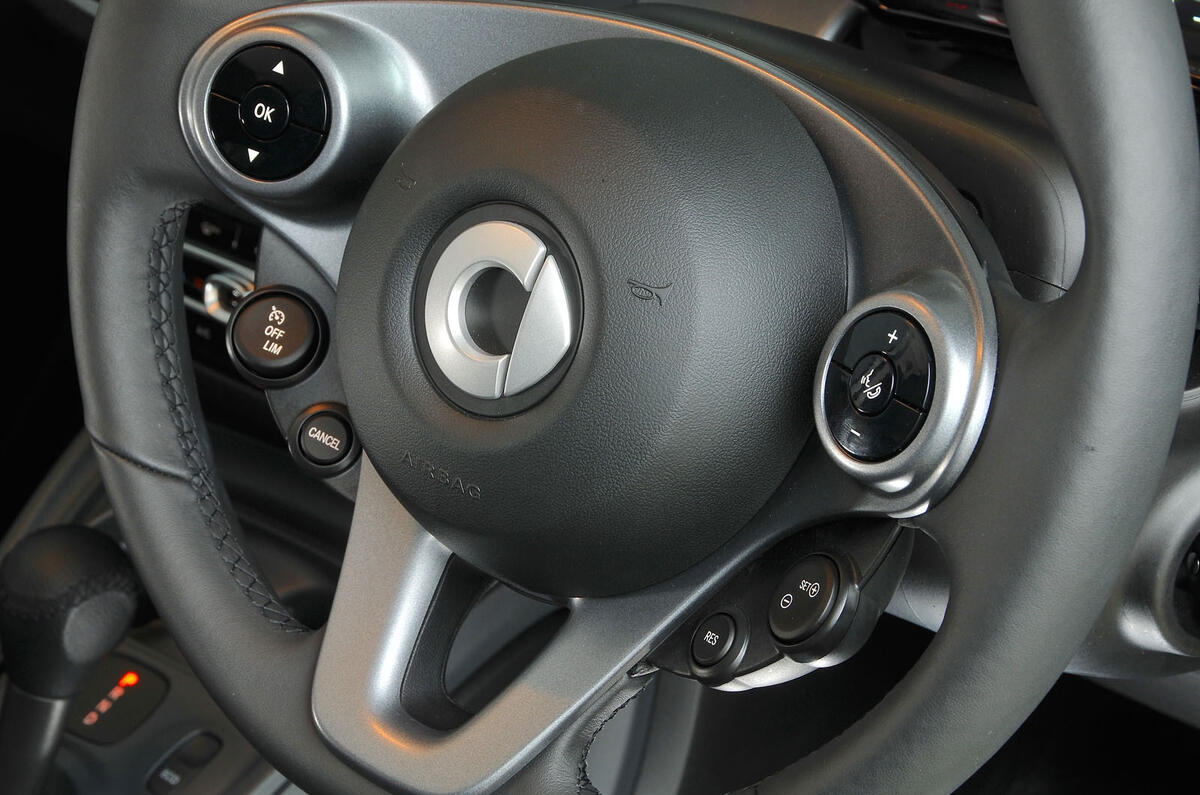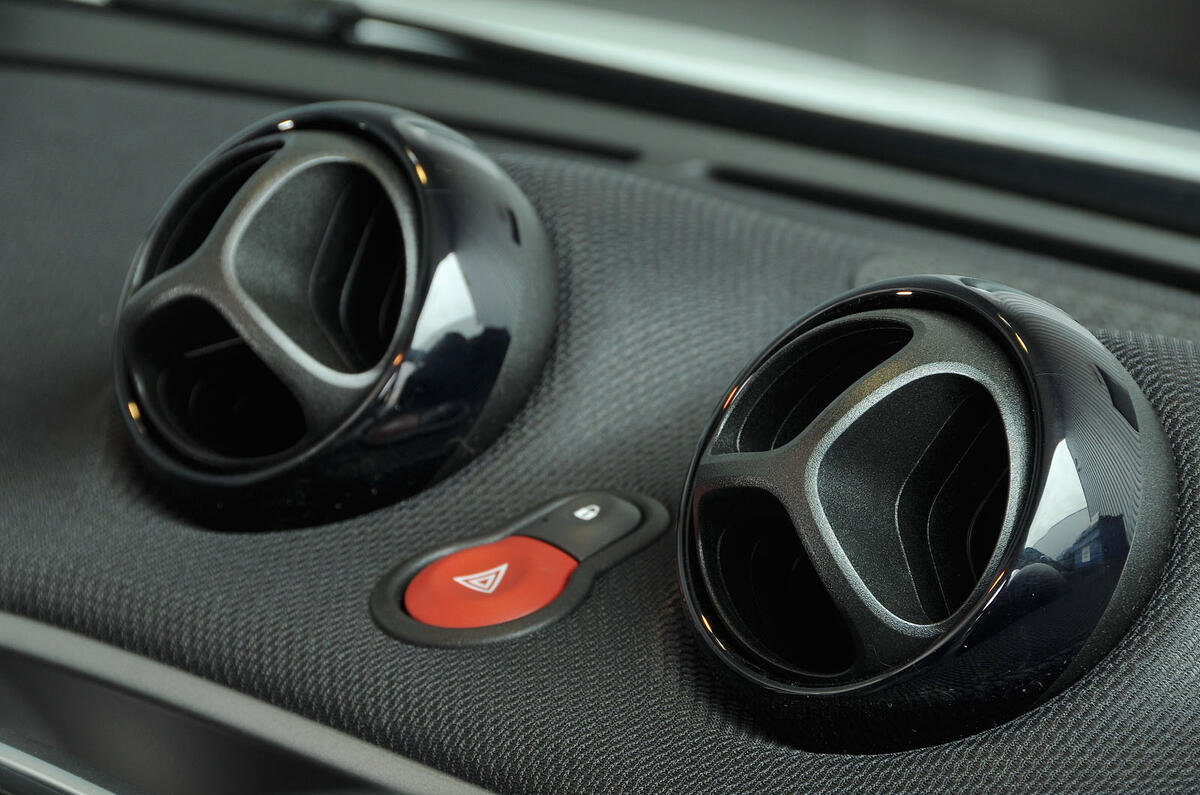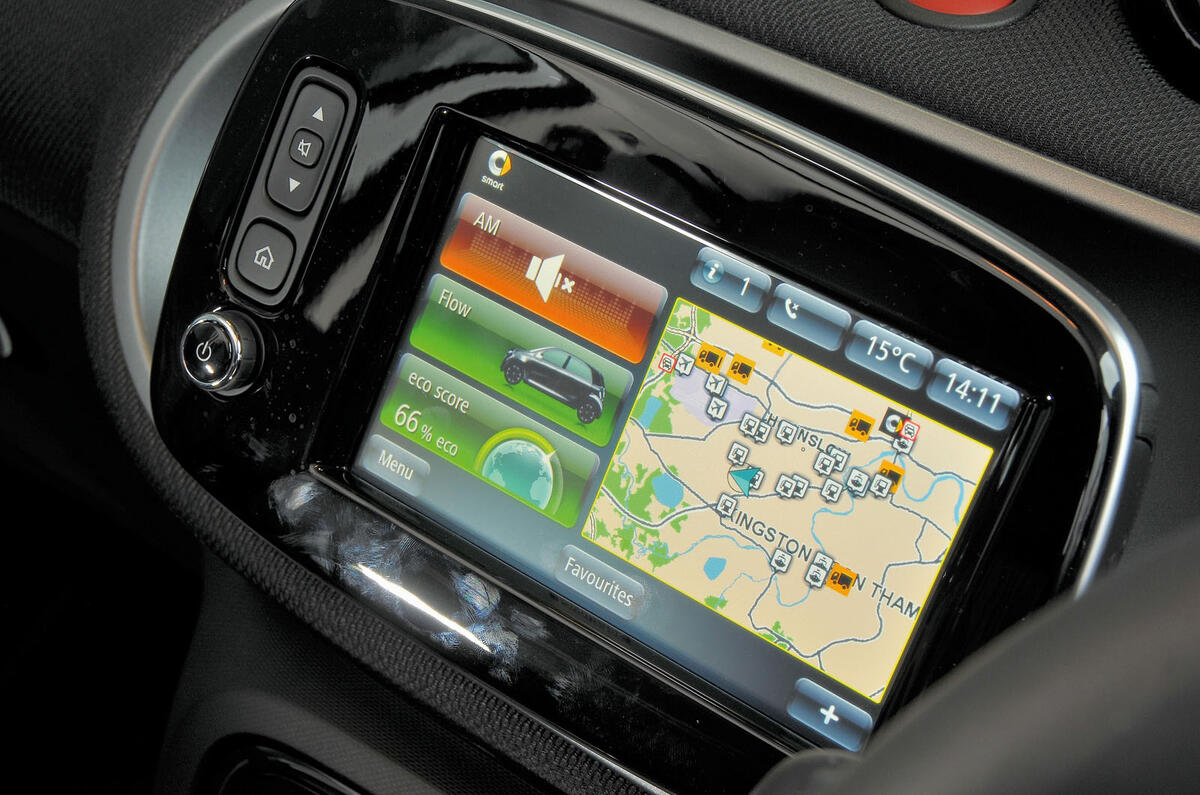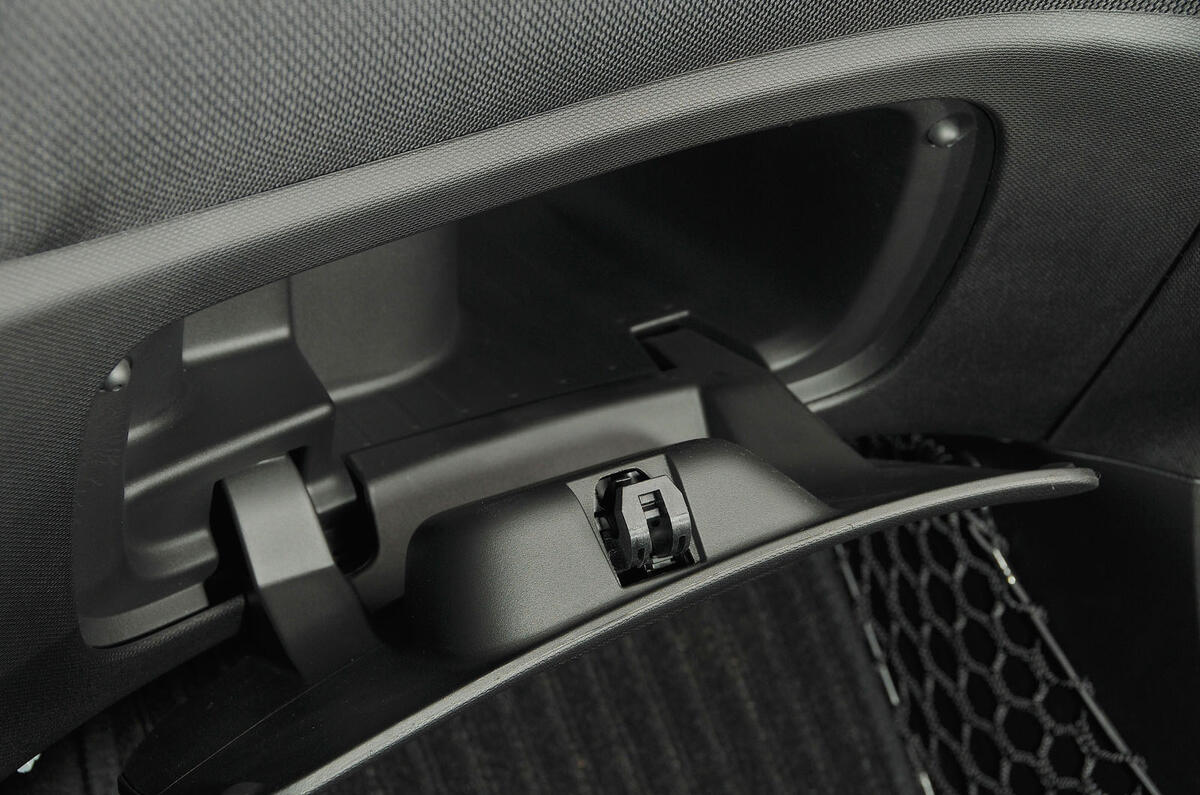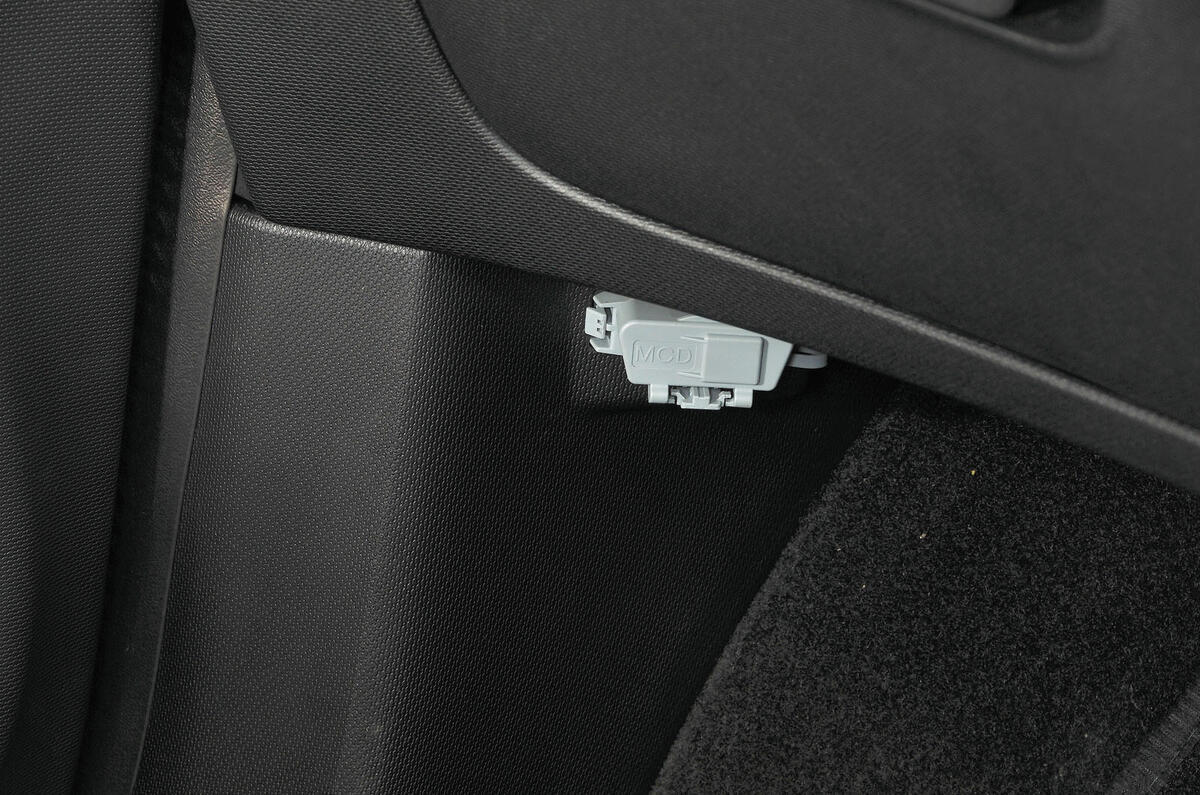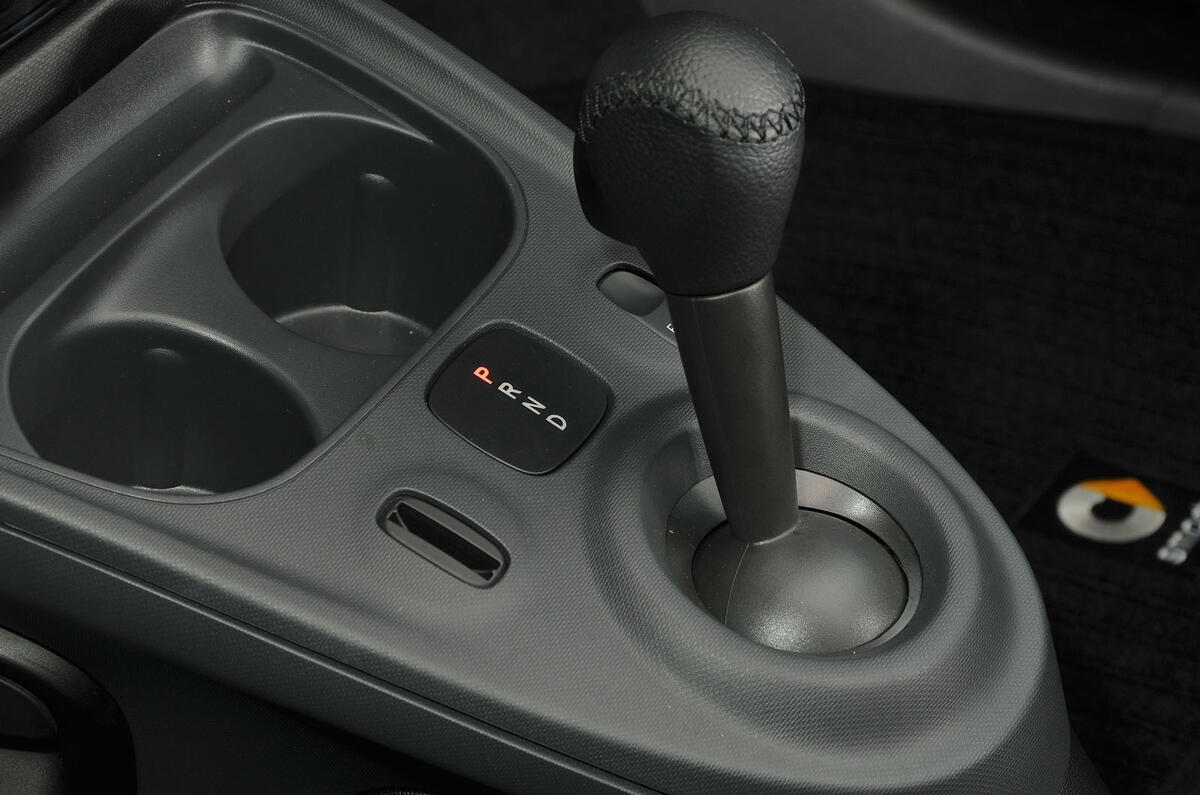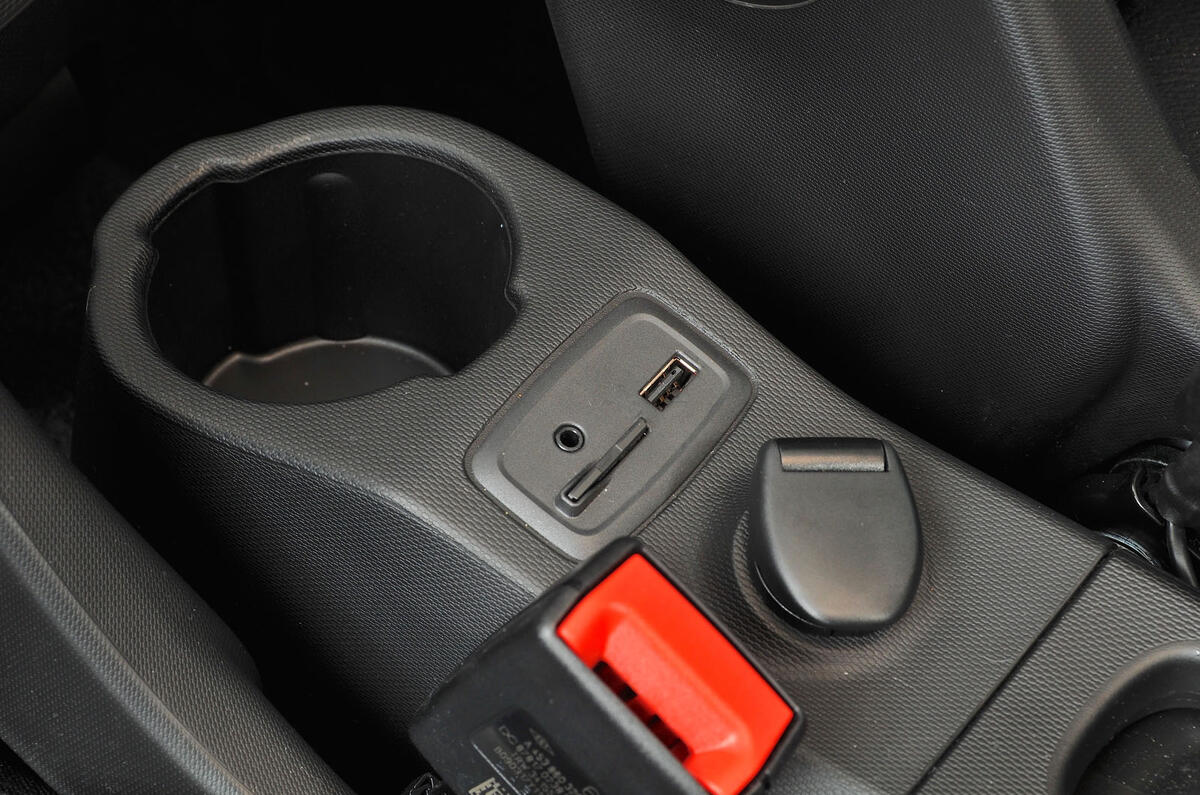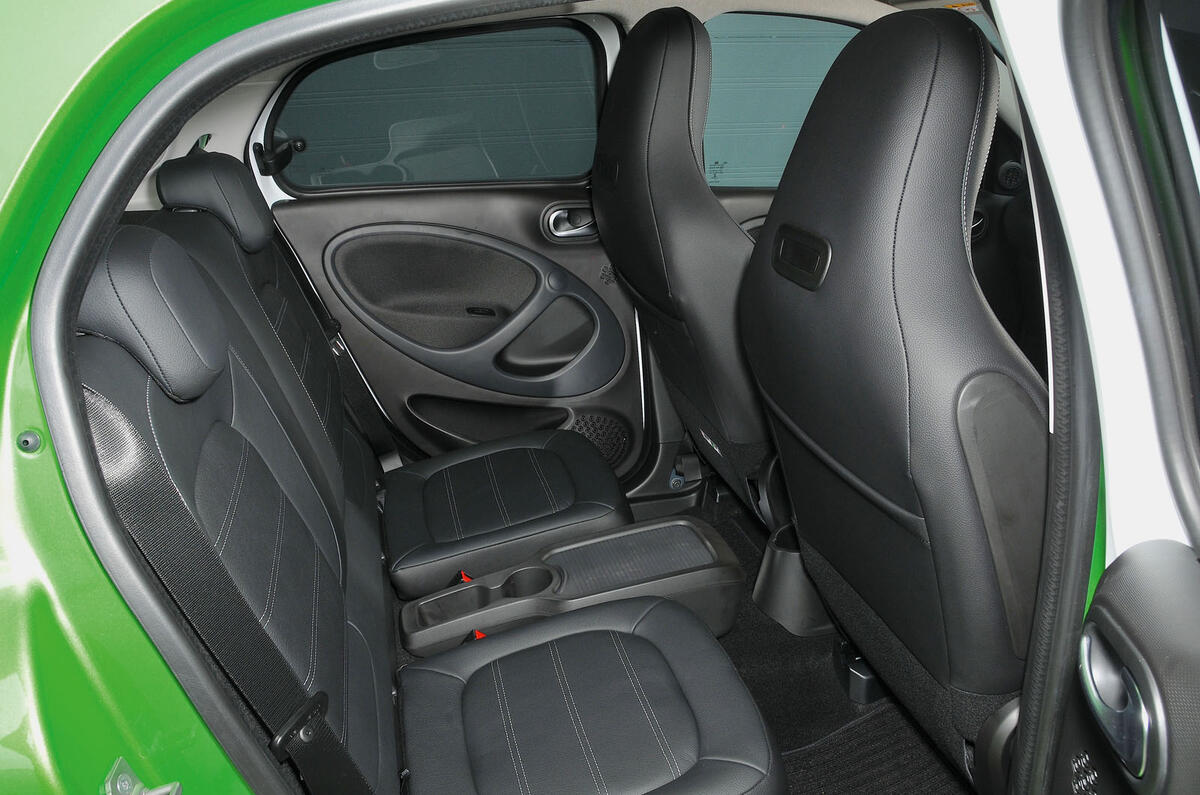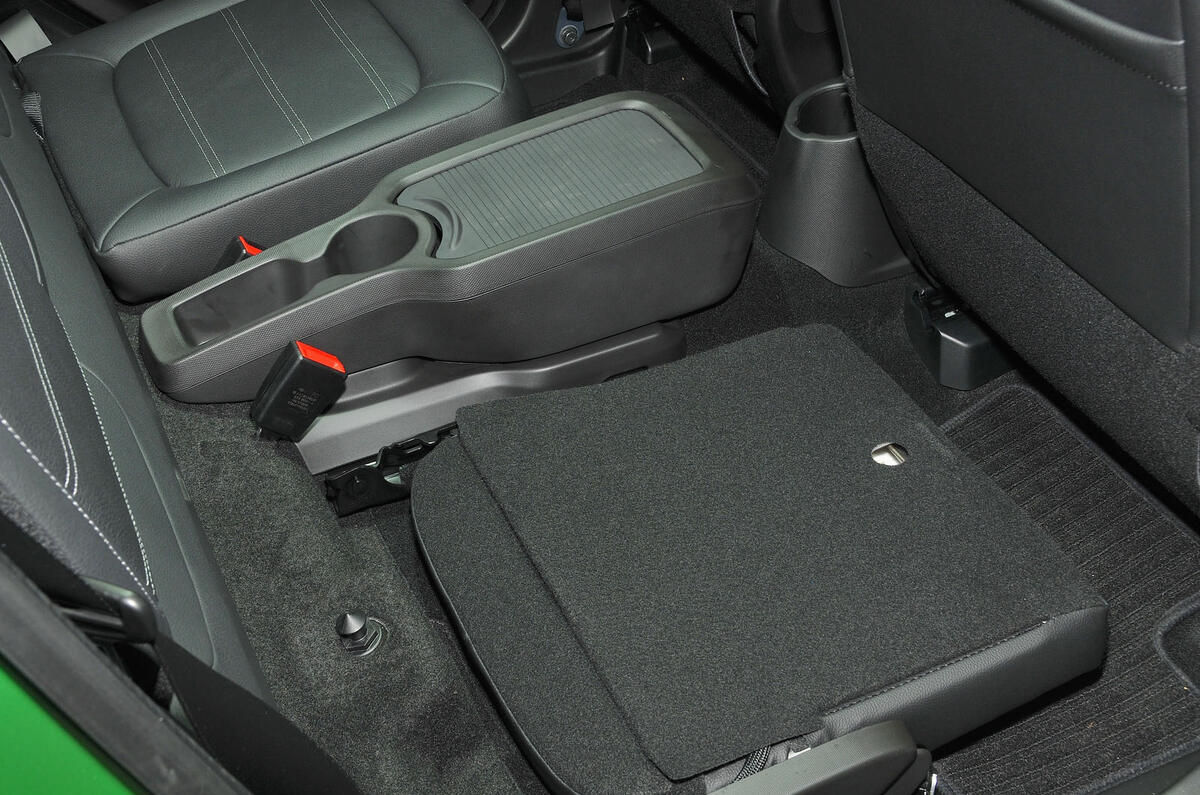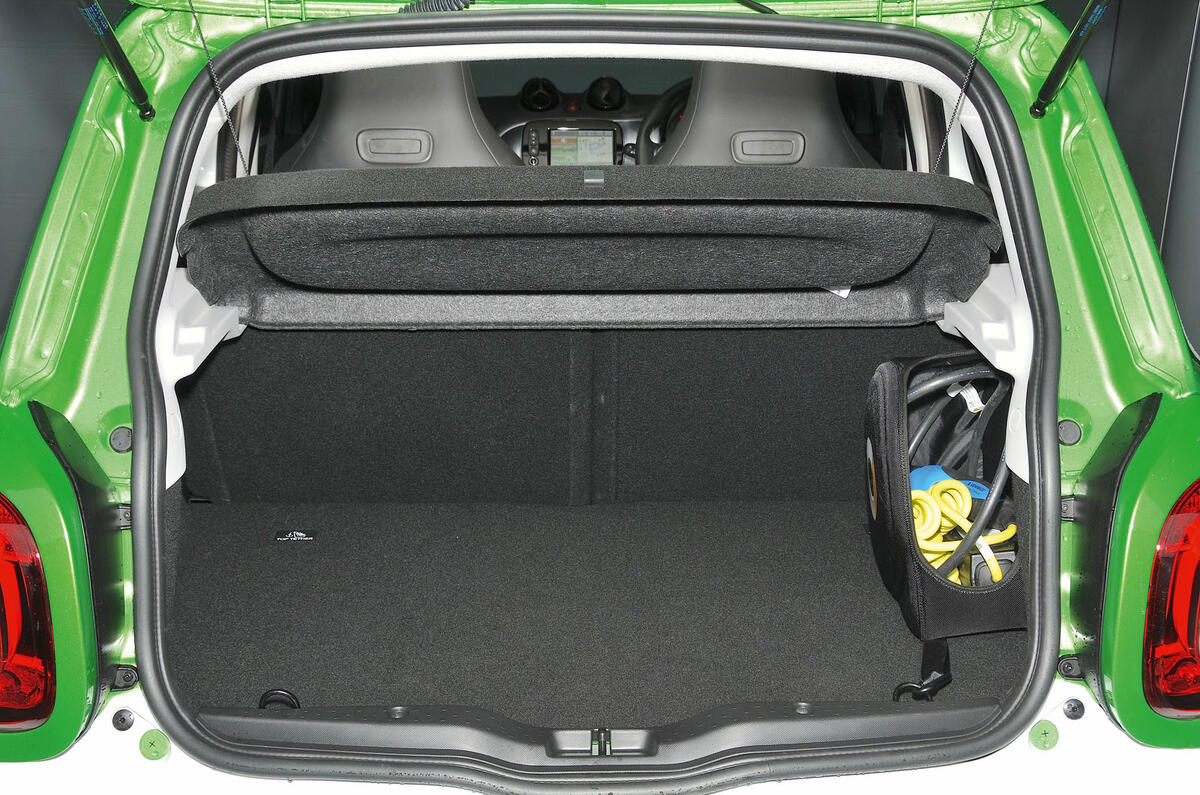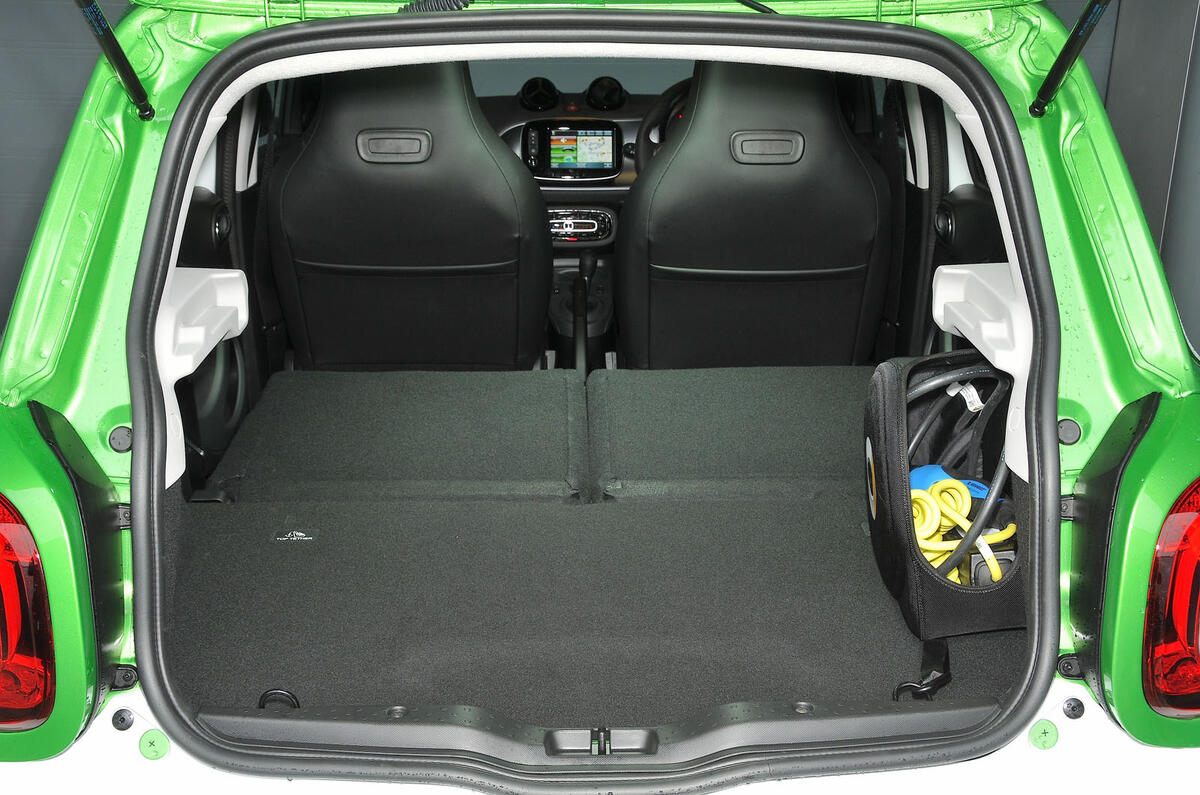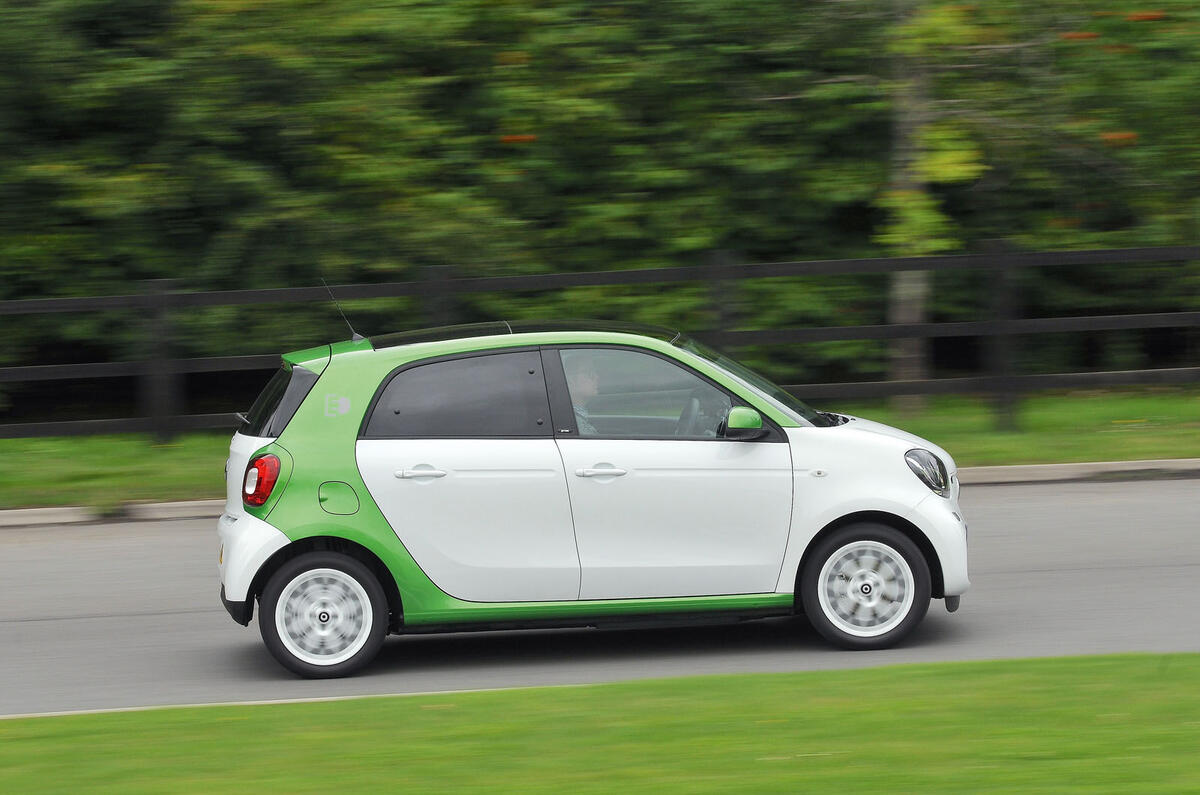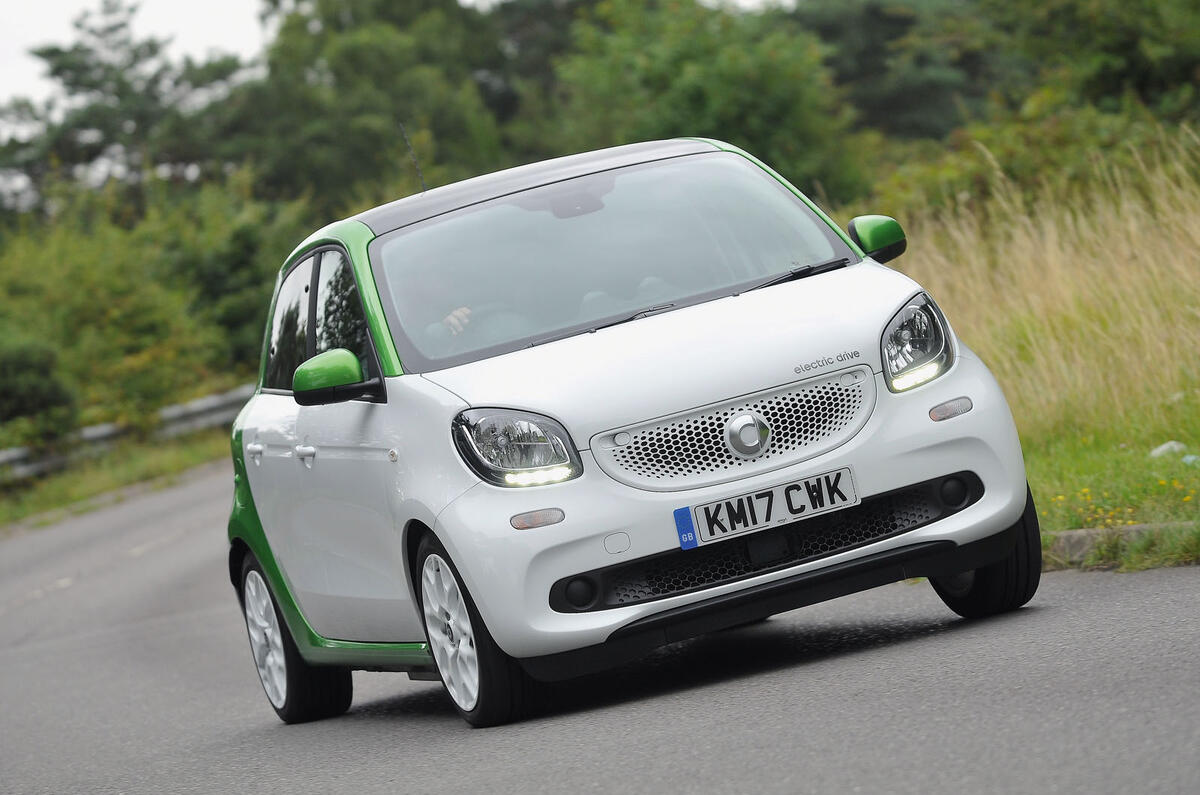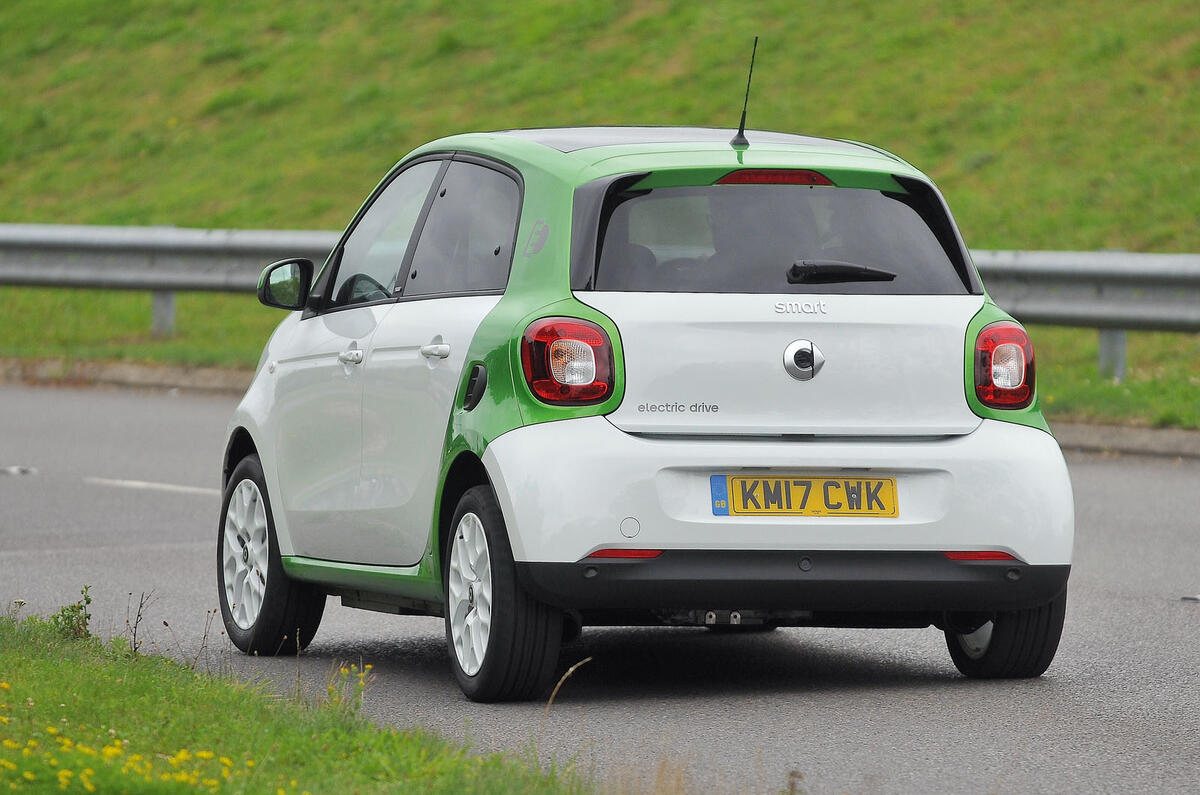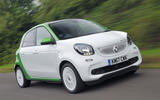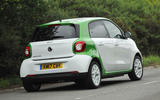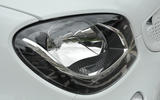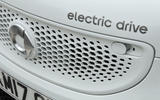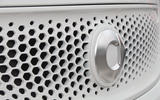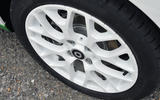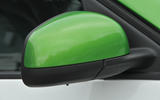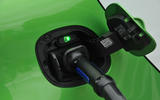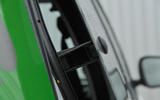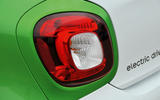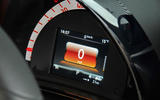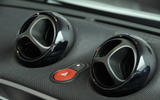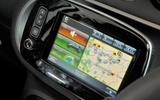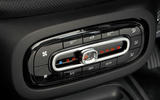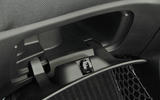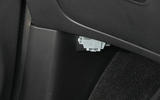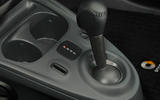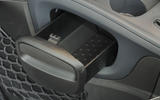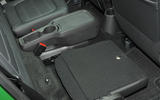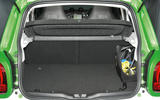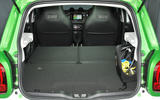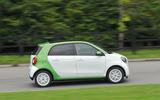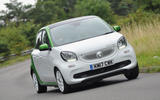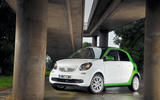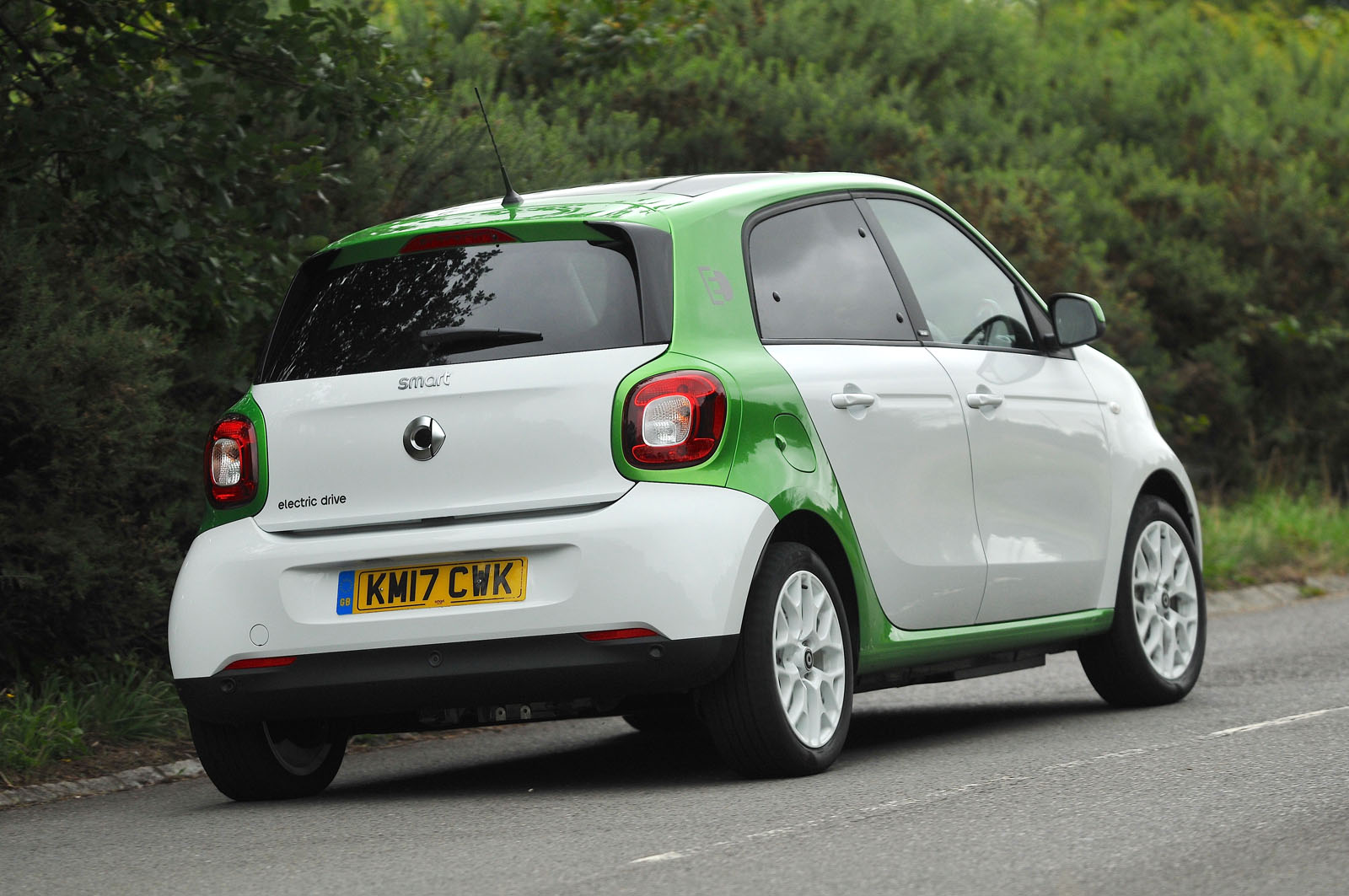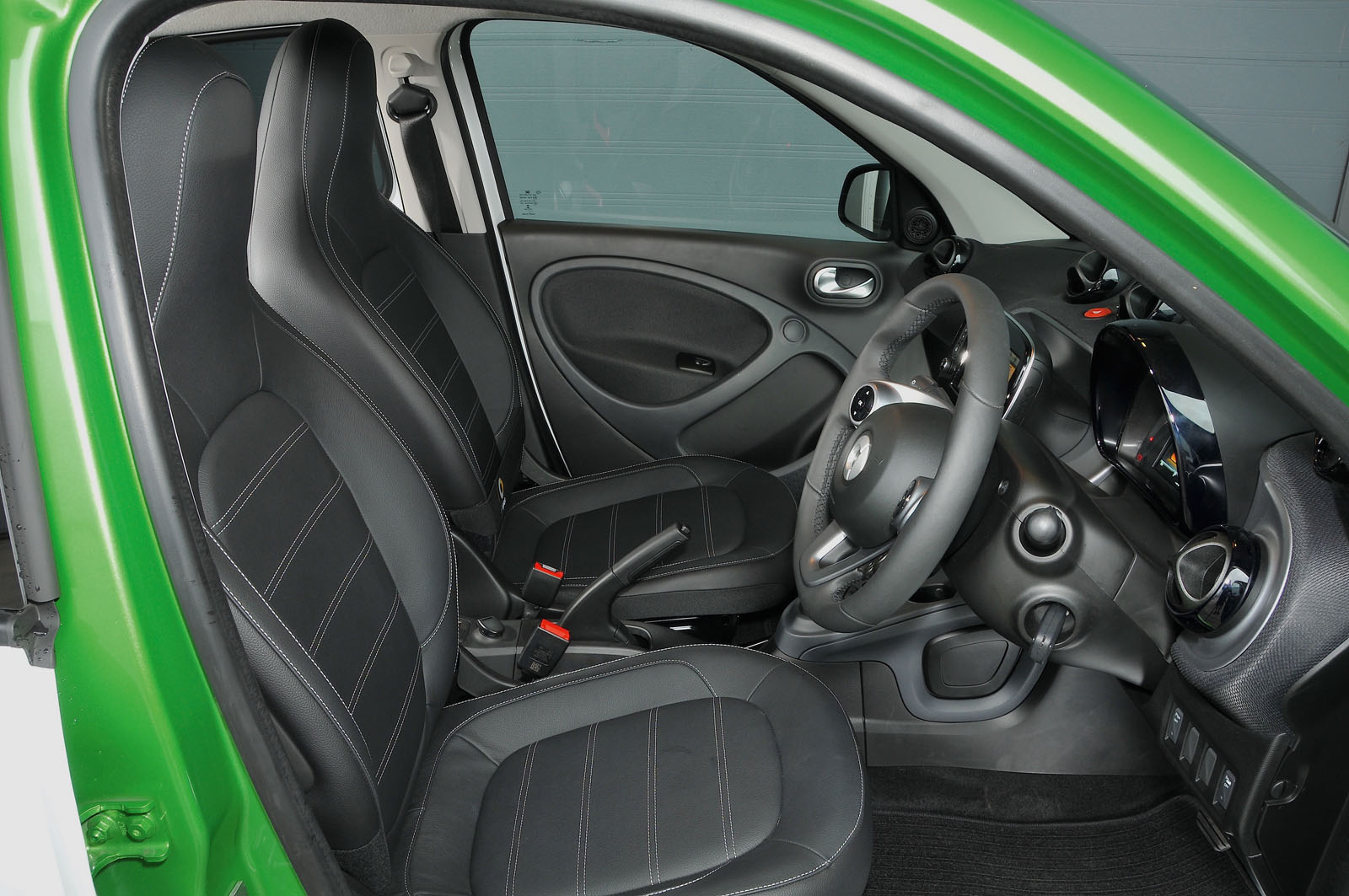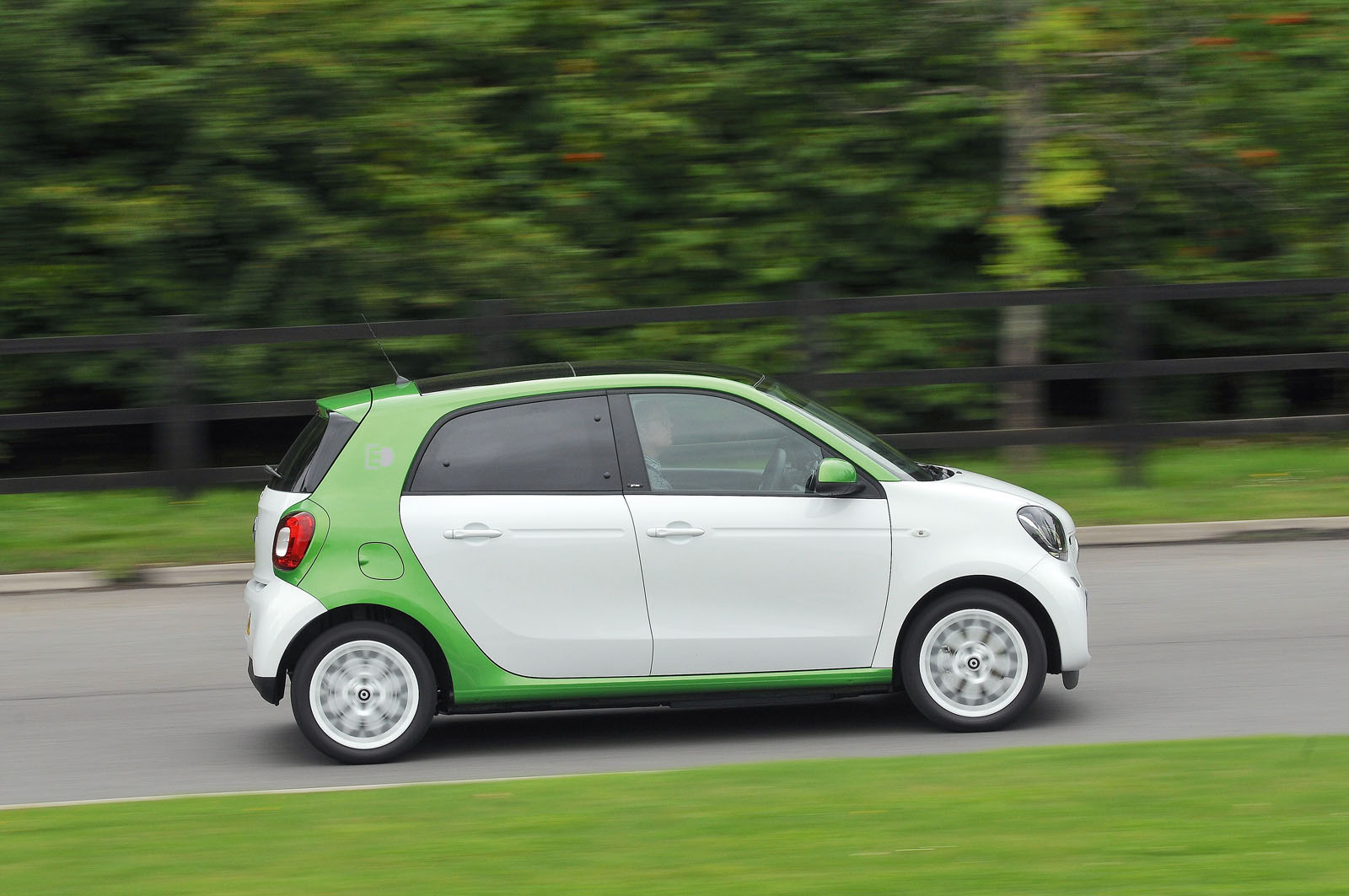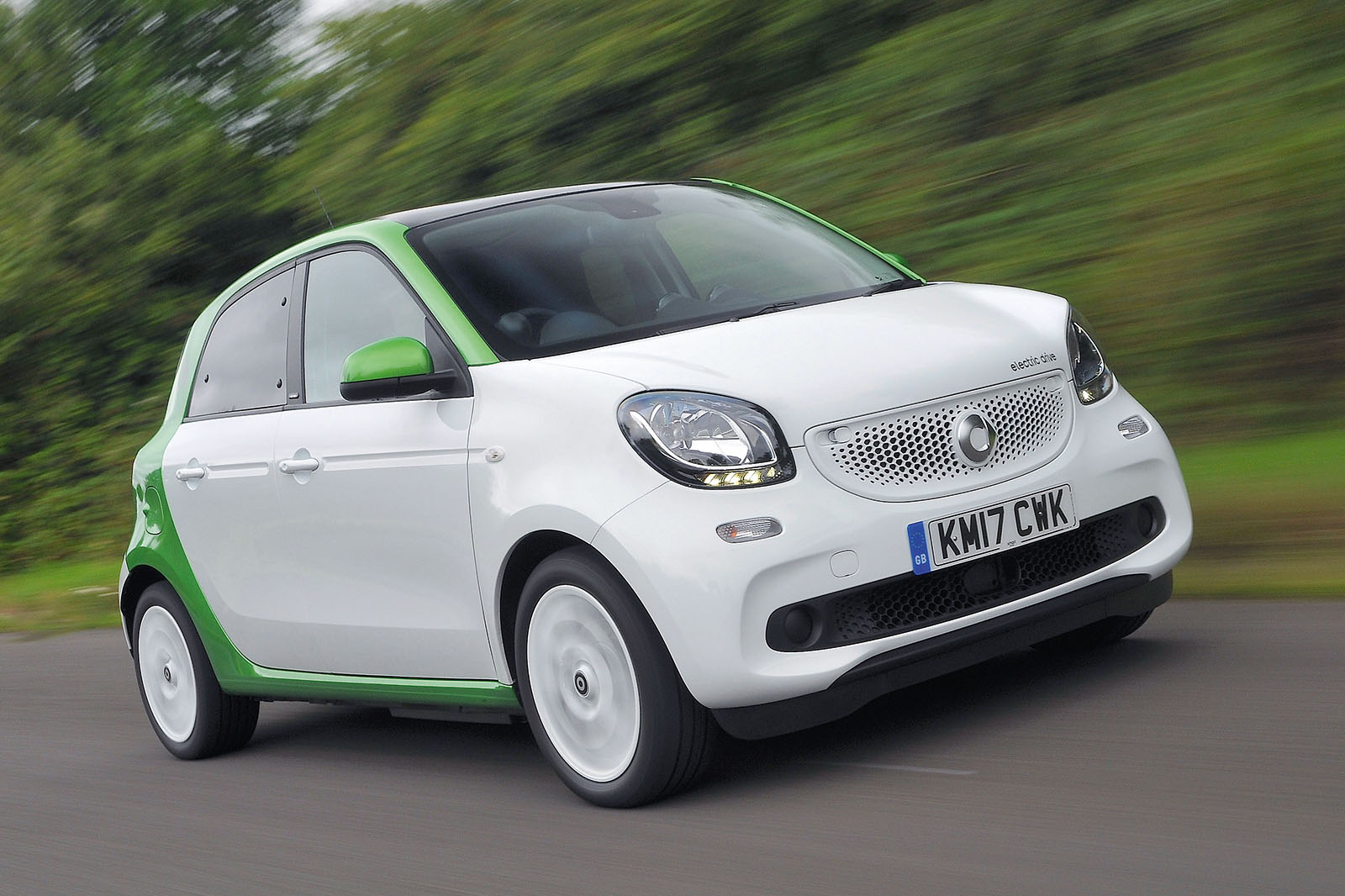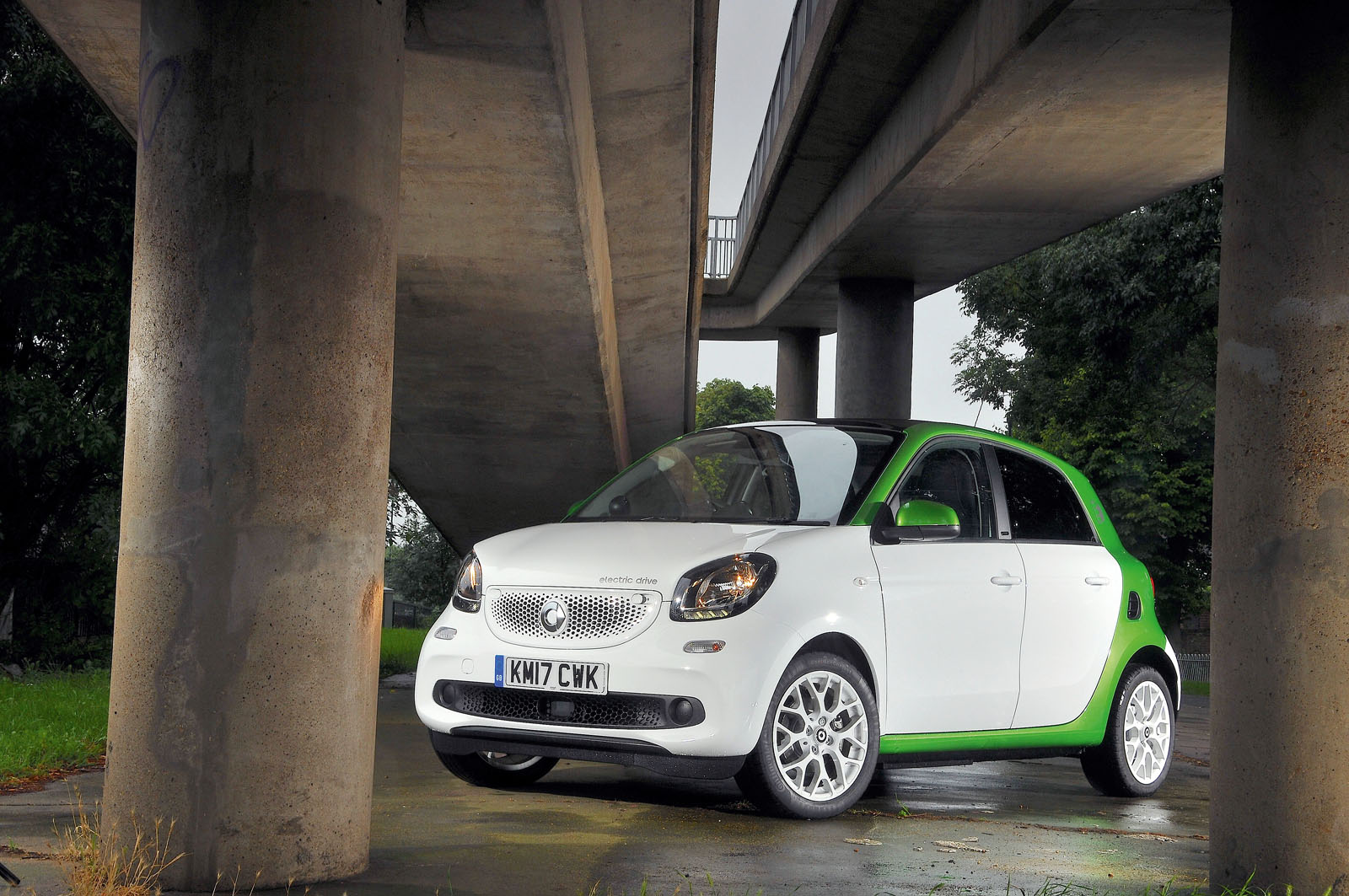The location of the original Smart car’s engine, immediately over the rear wheels, allowed a cabin big enough for two adults and a surprisingly usable boot to sit atop a wheelbase of well under 1.9m. Add another 800mm of wheelbase length and a second row of seats to that and you get a much more usable four-seater than many would imagine – albeit one still deliberately pitched
on the compact size of the most compact new car class in Europe.
Most larger adults will find adequate space for a comfortable driving position, although it’s necessarily a fairly perched one.
The steering column is fixed, but there’s a generous amount of head room up front and a driver’s seat that adjusts vertically as well as longitudinally and for backrest angle. Some drivers will find the analogue speedometer is obscured by the steering wheel if they sit as high as they’d ideally like to, so the lowest, most straight-legged sitting position possible is usually the best one to adopt.
And although that kind of driving position must have a knock-on effect on available second-row passenger space in a car this small, what it leaves is actually a pair of pleasingly full-sized individual back seats.
The seat cushions are short and the cabin floor high (which leaves your thighs floating slightly awkwardly in mid-air when you’re sitting back there) but there’s just about enough space for modest-sized adults and growing teenagers on short trips.
Head room back there is a bit mean by class standards, but the Smart Forfour actually offers more typical rear leg room than a Vauxhall Viva.
Smart’s apparent standard on material finish and perceived quality is less commendable. You might imagine a premium-priced city car would impress on this, but the Forfour’s classier features (heater controls, stylised air vents) are easily outnumbered by the number of areas where the interior looks and feels cheap.
Too many of the cabin plastics are hard and plain, an exposed wiring harness is visible in the passenger footwell and screwheads are on show here and there – all of which promotes a more low-rent ambience than is befitting.
Like the Renault Twingo, the Smart Forfour uses a Renault-sourced infotainment system that pre-dates the French maker’s latest portrait-orientated R-Link 2 systems.
It’s a 7.0in landscape-orientated touchscreen system with TomTom-branded navigation, Bluetooth and MirrorLink smartphone compatibility but none of the other Apple or Android mirroring standards.
The system’s responsiveness and general intuitive usability have come in for criticism on these pages before.
Tasks that are commonly required and simple to achieve on other systems — such as turning off auto zoom or changing map orientation on the navigation system — require penetrating through several menu levels and some annoying scrolling.
Mapping detail and resolution are poor and routes can take quite some time to plot, although you can input addresses via voice control.
The audio system quality is only okay, and the omission of DAB radio as standard means you often resort to the car’s AM radio, the reception quality of which is also quite poor.


